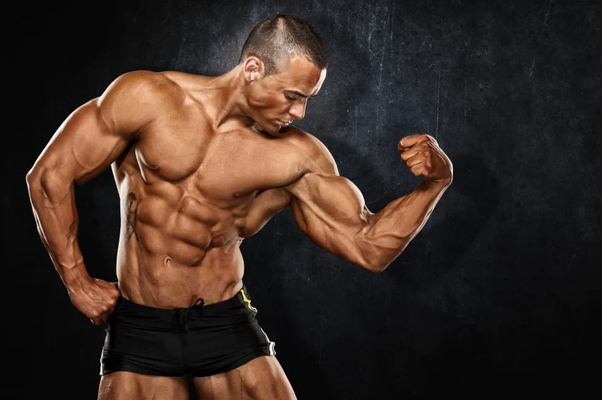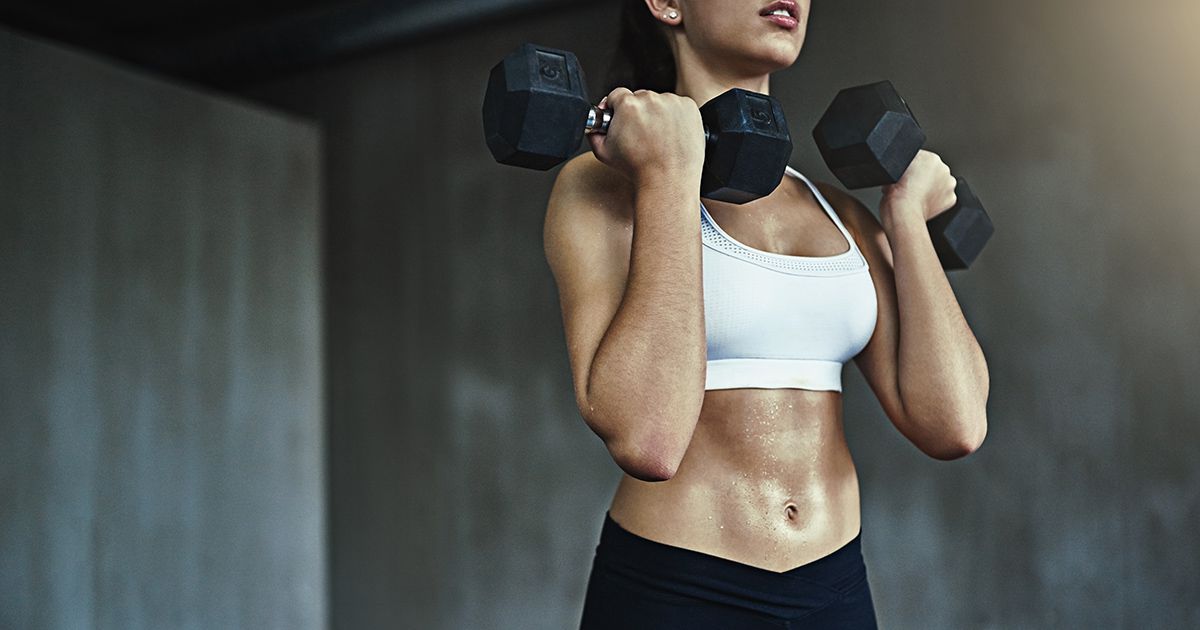Having one arm visibly larger or more muscular than the opposite arm is a common issue that many weightlifters and gym-goers experience. This noticeable muscle imbalance between limbs can be aesthetically frustrating and potentially lead to strength imbalances or injury risk if not addressed.

Today we find out the possible reasons that cause one arm to develop more muscle than the other, despite using the same weights and routines for both sides. We’ll provide tips on adjusting your strength training program to help even out arm size and muscle development through targeted exercises and techniques. Regain symmetry by learning how to fix this vexing physiological imbalance.
Types Of Biceps Genetics
Biceps genetics can vary significantly from person to person, influencing the size, shape, and overall appearance of the biceps. Here are several types of genetic factors that can impact bicep development:
1. Muscle Belly Length:
Long Muscle Bellies: Tend to fill in the space between the elbow and shoulder, giving a fuller, more developed look when flexed.
Short Muscle Bellies: Have more pronounced gaps near the joints, particularly noticeable near the elbow, which can make the biceps appear shorter and potentially limit the peak.
2. Muscle Insertion:
High Insertions: Muscles attach further up the arm, creating a more pronounced peak when flexed but might result in a smaller looking bicep when the arm is relaxed.
Low Insertions: Muscles extend closer to the elbow, offering a fuller look along the arm’s length but might not have as pronounced a peak.
3. Peak Shape:
Rounded Peak: Some individuals naturally have a more rounded bicep peak due to the way their muscles contract and their muscle belly shape.
Flatter Peak: Others may have a flatter peak, regardless of how much muscle mass they have or how strong they are.
4. Symmetry and Balance:
Symmetrical Development: Ideal genetic scenario where both biceps develop evenly in size, shape, and strength.
Asymmetrical Development: It’s common for one bicep to be slightly different in size or shape compared to the other, often due to dominant hand usage or natural variances.
5. Response to Training:
Responsive Muscles: Some individuals experience significant growth and development in their biceps in response to standard resistance training.
Less Responsive Muscles: Others may find their biceps are stubborn and require more targeted or intense training regimens to see growth.
6. Fat Distribution:
Lean Arm Genetics: Individuals with genetically lower body fat in their arms can make the biceps appear more defined and prominent.
Higher Fat Distribution in Arms: This can make the biceps appear less defined, affecting the perceived size and shape of the muscle.
How To Increase Biceps Peak: Try These 8 Exercises
Increasing the peak of your biceps involves focusing on exercises that target the long head of the bicep muscle, as this is the part that contributes most to the peak when flexed. Here are eight exercises designed to help enhance your biceps peak:
1. Standing Barbell Curl:
- Why It Works: This classic exercise targets both bicep heads but can be modified to emphasize the long head by keeping your elbows slightly behind your body during the curl.
- How to Do It: Stand with feet shoulder-width apart, holding a barbell with an underhand grip. Curl the bar towards your chest, then slowly lower back down.
2. Incline Dumbbell Curl:
- Why It Works: The incline position stretches the long head of the bicep more, increasing its activation.
- How to Do It: Sit on an incline bench with a dumbbell in each hand, palms facing forward. Curl the weights towards your shoulders, then slowly lower them back down.
3. Hammer Curl:
- Why It Works: While primarily targeting the brachialis (a muscle that can push the peak of your biceps up), hammer curls also engage the long head of the biceps.
- How to Do It: Hold a dumbbell in each hand at your sides, palms facing each other. Curl the weights up while keeping your palms facing each other, then slowly lower.

4. Concentration Curl:
- Why It Works: This exercise prevents you from using momentum, ensuring the biceps do all the work, particularly emphasizing the peak.
- How to Do It: Sit with legs spread, a dumbbell in one hand. Lean forward slightly, resting your elbow on your thigh. Curl the dumbbell towards your shoulder, then lower.
5. Preacher Curl:
- Why It Works: The angle of the preacher bench places more emphasis on the long head of the bicep, contributing to peak development.
- How to Do It: With an underhand grip, hold a barbell or EZ bar and rest your arms on a preacher bench. Curl the bar towards you, then slowly lower it down.
6. Cable Curl with Rope Attachment:
- Why It Works: Cables provide constant tension throughout the exercise, hitting the biceps effectively. The rope allows for a neutral grip, engaging the long head.
- How to Do It: Attach a rope to a low pulley cable. Holding the rope with both hands, curl the weight while keeping your elbows stationary, then slowly extend your arms.
7. Spider Curl:
- Why It Works: Lying face down on an incline bench prevents your body from using momentum, focusing the effort on the biceps, particularly the long head.
- How to Do It: Lie face down on an incline bench, holding dumbbells or a barbell with an underhand grip. Curl the weights towards your shoulders, then lower them slowly.
8. Zottman Curl:
- Why It Works: This exercise combines a regular curl and a reverse curl, targeting the biceps from multiple angles and stimulating the long head.
- How to Do It: Curl the dumbbells up with a palms-up grip, at the top of the movement rotate your hands so your palms face down, then slowly lower the weights.
What Are The Main Differences Between Good And Bad Bicep Genetics?
The concept of “good” and “bad” bicep genetics primarily refers to how certain genetic predispositions can influence the size, shape, and overall appearance of the biceps. These distinctions are often based on aesthetic preferences and goals, especially in bodybuilding and fitness contexts. Here are the main differences:
Good Bicep Genetics:
- Long Muscle Bellies: This feature allows for a fuller look, with the muscle extending closer to the elbow, reducing the appearance of a gap between the bicep and forearm.
- Favorable Insertion Points: Muscles that attach in a way that enhances the bicep’s peak when flexed are often considered desirable. This can give the bicep a more pronounced, rounded appearance.
- Symmetrical Development: Having both biceps develop evenly in size, shape, and strength is also seen as a positive trait, contributing to a balanced and aesthetically pleasing physique.
- Responsive to Training: Individuals whose muscles respond well to resistance training, showing significant growth and development with standard exercise routines, are said to have good genetics for muscle building.
- Desirable Muscle Shape and Peak: A well-defined, pronounced peak and a shape that’s visually appealing when flexed or relaxed can also indicate good bicep genetics.
Bad Bicep Genetics:
- Short Muscle Bellies: Shorter muscle bellies can create a more pronounced gap between the bicep and forearm, making the arms look less full.
- Less Favorable Insertion Points: If the muscle attaches in a way that doesn’t enhance the bicep’s peak or overall appearance, it might be considered less genetically favorable.
- Asymmetrical Development: Significant differences in size, shape, or strength between the two biceps can be seen as a negative trait, as it can be more challenging to achieve a balanced look.
- Less Responsive to Training: Muscles that show minimal growth or development in response to resistance training, requiring more effort for less noticeable gains, indicate less favorable genetics.
- Flat Muscle Peak and Shape: A bicep that lacks a pronounced peak or has a shape that’s not considered aesthetically pleasing according to conventional standards might be viewed as having bad genetics.
Frequently Asked Questions
How can I enhance the appearance of my biceps?
To enhance your biceps, focus on progressive overload by increasing weights and reps, include variations in your workouts for balanced muscle development, maintain proper form while targeting the biceps, allow for sufficient rest and recovery, follow a protein-rich diet, and stay consistent with your fitness routine.
Are biceps mostly genetic?
Yes, the length and structure of bicep muscles are largely determined by genetics. Individuals with very long bicep muscles may find it challenging to achieve desired results through exercise due to genetic factors.
Why do my arms look small until I flex?
If your arms appear small at rest but larger when flexed, it indicates a need to build more muscle mass in your arms to improve their appearance.
Can genetics affect my chest development?
Genetics can influence characteristics like upper- and lower-chest muscle differences, distinct gaps between muscle peaks and valleys, or clavicle length, impacting chest development.
Do biceps insertions affect muscle development?
High bicep insertions can impact strength potential as shorter muscles have less surface area for protein filaments and cross bridges, affecting muscle development and strength.
Will weightlifting stunt my growth?
Weightlifting does not stunt growth according to studies and experts. However, teens should exercise caution and prioritize proper training techniques to avoid potential risks.

Hello, I’m Ravindra. Over the years, I’ve immersed myself deeply into the world of fitness and health, transforming both my body and mind. Writing has allowed me to share my journey, insights, and expertise with those just starting out and seasoned fitness enthusiasts alike. Beyond just routines and diets, I believe in inspiring others to adopt a holistic approach to well-being.
